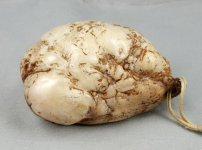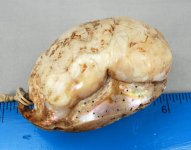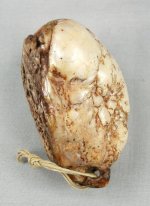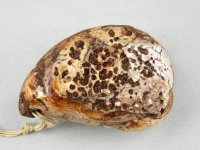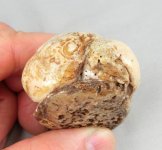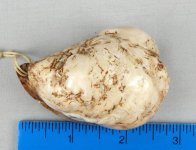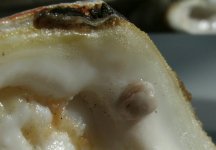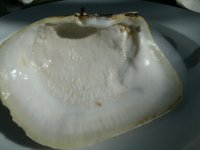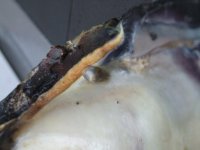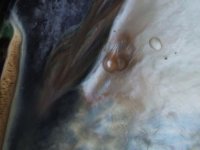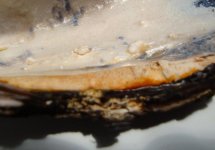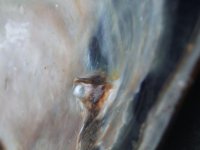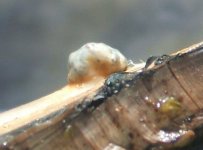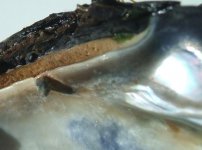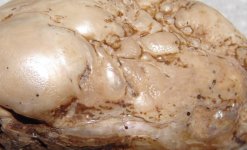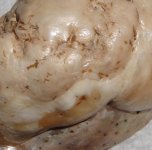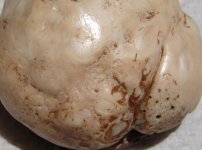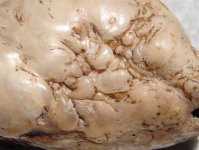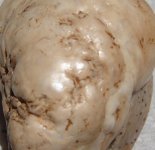Hi Everyone,
I'm new to the group, what a great resource. I got this piece as a mystery item along with some
antique/ancient shell beads. It has been drilled, a pendant? It appears old and used. The
surface is worn and has some old discolored shellac or something that has turned brown. The
pearl weighs 134 grams and measures 67mm x 45mm x 38mm. Though the surface is worn, there are
many nacreous areas visible. Any thoughts or help on origin of the pearl, or how and where it
may have lived its previous life?
The bead collection she was selling was her Mother's and most of the items that were marked were
from Burma, India and Mali.
Thanks is advance for any help,
Marc
I'm new to the group, what a great resource. I got this piece as a mystery item along with some
antique/ancient shell beads. It has been drilled, a pendant? It appears old and used. The
surface is worn and has some old discolored shellac or something that has turned brown. The
pearl weighs 134 grams and measures 67mm x 45mm x 38mm. Though the surface is worn, there are
many nacreous areas visible. Any thoughts or help on origin of the pearl, or how and where it
may have lived its previous life?
The bead collection she was selling was her Mother's and most of the items that were marked were
from Burma, India and Mali.
Thanks is advance for any help,
Marc

